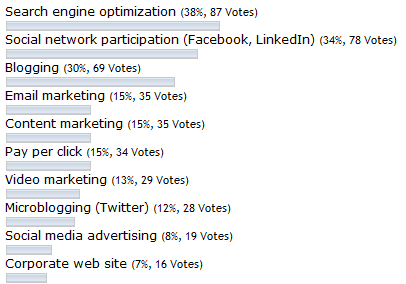Change creates growth
this leads to
In 10 words or less: measure and evaluate, in order to make effective changes.
We see many sites "stuck" at the same level of traffic. Many sites generate the same number of new visitors consistently, year after year, the number changing only 1-2%.
In practical terms: you can rely on changes in your search engine ranking or free publicity, OR you can work to make change yourself.
By looking at thousands of web traffic datasets we have learned that change does not happen by itself, you need to make change happen.
Find out and make it happen. The best option will mean increased user satisfaction and products viewed.
A lot depends on your site strategy. Google, for example, is designed to get visitors off their site; fast results drive high visitor click-throughs, and keep visitors coming back.
Your goal may be to keep visitors on your site. Therefore you should identify the solution that results in the most pages served (clicks) & time spent on your site. We think the goal is to give your visitors a good experience.
Your website does not exist in a vacuum. Your website exists in the internet environment, this means your (potential) success is dependent on this context and how you "fit in". In evolutionary terms, this is called adapting, survival of the fittest.
What can you learn from the wider internet and apply to your website in order to improve? Specifically, what observable trends will influence your content management strategies?
this leads to
The opentracker law of website traffic:
Given a constant environment, website traffic will remain unchanged unless you take action.
"Unchanged" refers to: the number of new visitors, visitors entering by search term, referred traffic, etc, will not increase.
executive summary: in a nutshell
The point of this article to make you aware of the need to change things on your website in order to increase traffic and make your site more effective.In 10 words or less: measure and evaluate, in order to make effective changes.
We see many sites "stuck" at the same level of traffic. Many sites generate the same number of new visitors consistently, year after year, the number changing only 1-2%.
In practical terms: you can rely on changes in your search engine ranking or free publicity, OR you can work to make change yourself.
general introduction: change creates growth
Summary:- Change creates growth
- Action is required for change
By looking at thousands of web traffic datasets we have learned that change does not happen by itself, you need to make change happen.
Steps To Take In Order To Succeed:
In order to take action you need:- information or data
- the ability to implement your ideas effectively
- a way monitor this; indicator of success or failure
- ability to identify and implement the most effective solution
Find out and make it happen. The best option will mean increased user satisfaction and products viewed.
A lot depends on your site strategy. Google, for example, is designed to get visitors off their site; fast results drive high visitor click-throughs, and keep visitors coming back.
Your goal may be to keep visitors on your site. Therefore you should identify the solution that results in the most pages served (clicks) & time spent on your site. We think the goal is to give your visitors a good experience.
your website: understanding the internet environment
Pay attention to what is happening on the internet, and how it affects your success:Your website does not exist in a vacuum. Your website exists in the internet environment, this means your (potential) success is dependent on this context and how you "fit in". In evolutionary terms, this is called adapting, survival of the fittest.
What can you learn from the wider internet and apply to your website in order to improve? Specifically, what observable trends will influence your content management strategies?
how to stimulate change: seeing your website in context
- The question is "what should you do in order to stimulate change?"
- The public are increasingly savvy
- The internet is more interactive in the Web 2.0 environment.
- Can you generate content related to any changes you observe?
 Here
we are just past the halfway mark in 2010 and we’ve tapped into the
stream of future marketing planning with our readers for 2011 with a
poll. Our question? What 3 online marketing channels & tactics will
you emphasize in 2011? The number one answer? Not social media, not
email marketing.
Here
we are just past the halfway mark in 2010 and we’ve tapped into the
stream of future marketing planning with our readers for 2011 with a
poll. Our question? What 3 online marketing channels & tactics will
you emphasize in 2011? The number one answer? Not social media, not
email marketing.




